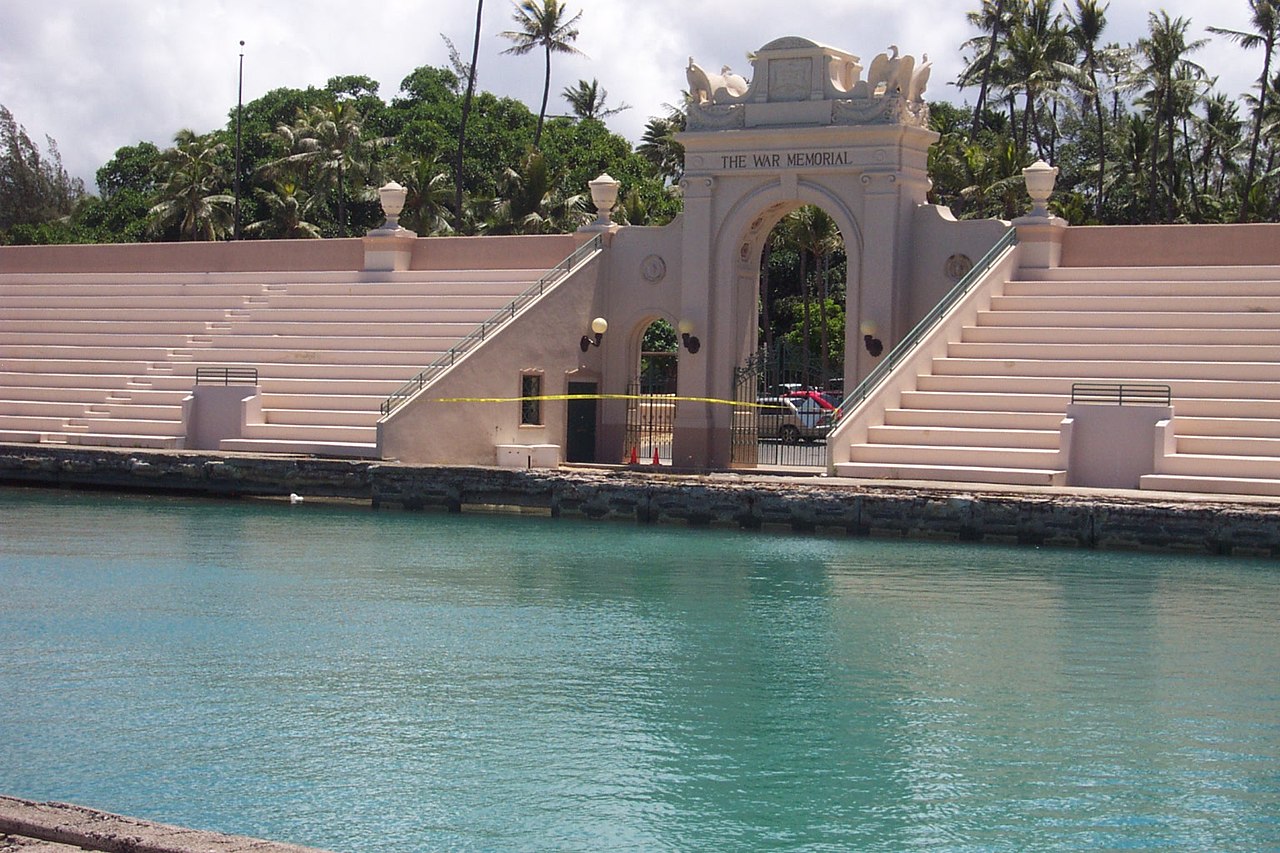WAIKĪKĪ WAR MEMORIAL NATATORIUM ENVIRONMENTAL STATEMENT TO BE READY SUMMER 2018
Four Alternatives Will Be Evaluated in EIS
12/11/2017: The City and County of Honolulu provided an update on the status of the Environmental Impact Statement (EIS) that it is preparing to evaluate alternatives for the future of the Waikīkī War Memorial Natatorium.
The purpose of the EIS is to recommend projects to renew the memorial and re-establish full public access to this area of Kapi‘olani Park.
Following that draft EIS, public hearings are anticipated for fall 2018 with the publication of the final EIS scheduled in spring 2019.
The Waikīkī War Memorial Natatorium opened in 1927 as a “living memorial” to those who served in World War I from Hawai‘i. The structure is significant for its long history as a swimming venue and its association with legendary watermen Duke Kahanamoku, Buster Crabbe and Jonny Weismuller. It is listed on the National Register of Historic Places for both its historic and architectural significance. It has been closed since 1979.
“We’ve been making steady progress with the EIS and the process is working,” said Mayor Kirk Caldwell. “Through this process, and the consultations it requires, we’ve developed four alternatives to address the long neglected memorial. An additional alternative has recently been added, which looks promising. We’re labeling it Alternative 2 and it consists of a flow through perimeter deck where the original, crumbling deck is now.”
Historic Hawai‘i Foundation submitted written comments during the pre-EIS scoping period that said the original range of alternatives was too narrow and did not include an option for rehabilitation of the historic structure. The new alternative 2, called the “Perimeter Deck” option helps meet the need for a fuller range of alternatives. The need for a fuller range of options was also required by the State Historic Preservation Division in order to comply with the State’s historic preservation law, HRS 6E.
In a press conference on December 11, the City said that both the Perimeter Deck alternative and the Demolition/Beach Building alternative would cost between $20 million and $30 million. The closed pool system alternative would cost between $40 million and $60 million. An option for a controlled collapse and removal of the debris would cost between $2 million – $4 million.
No operational and maintenance costs for the alternatives have been developed yet, but are expected to be included in the draft EIS.
The four alternatives proposed for the site include:
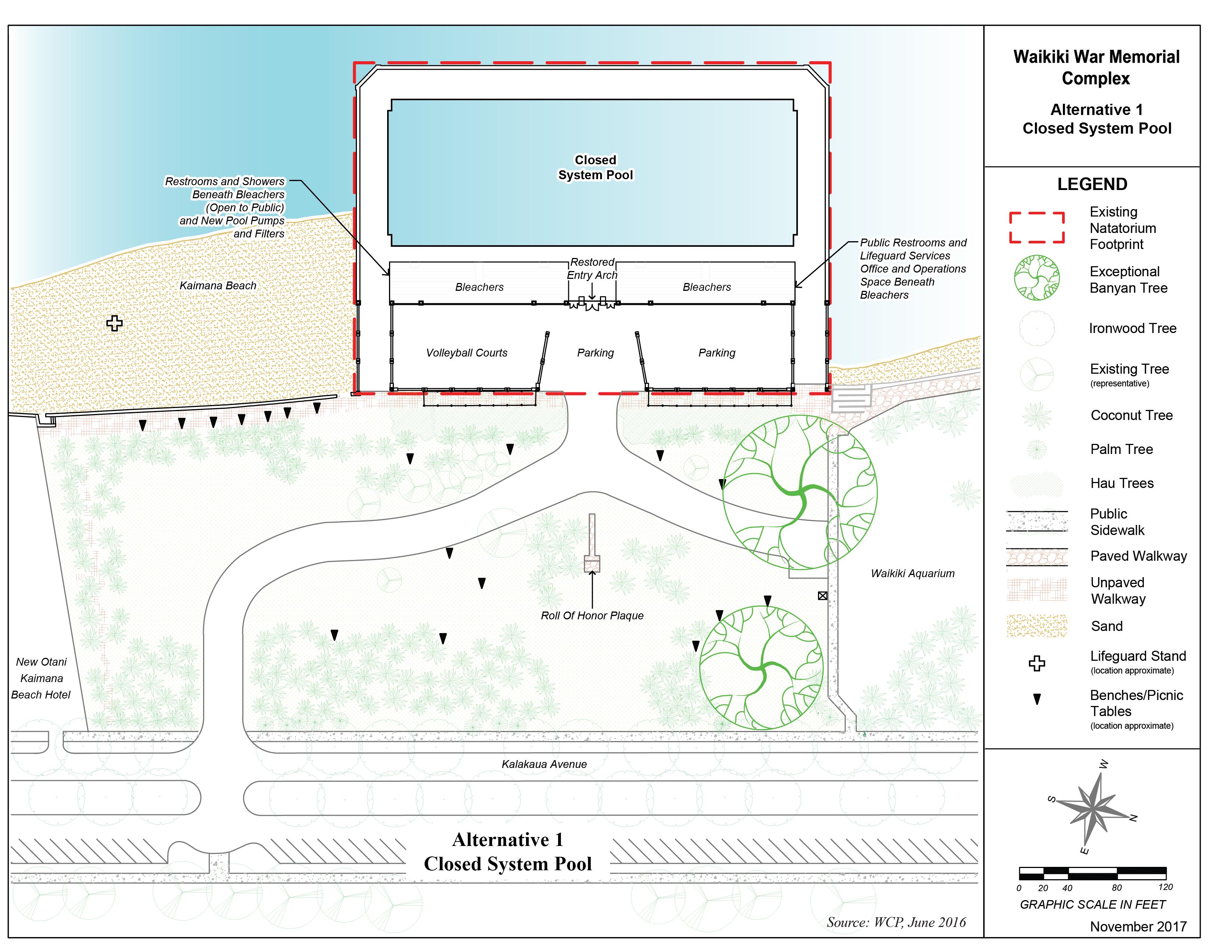
Alternative 1 – Closed Pool System
• Reconstructs and restores the Natatorium in general accordance with the 1998 plans, except for the ocean-fed pool design.
• Ocean-fed pool qualifies as a public swimming pool and would be subject to health provisions.
• Estimated cost $40 million to $60 million.
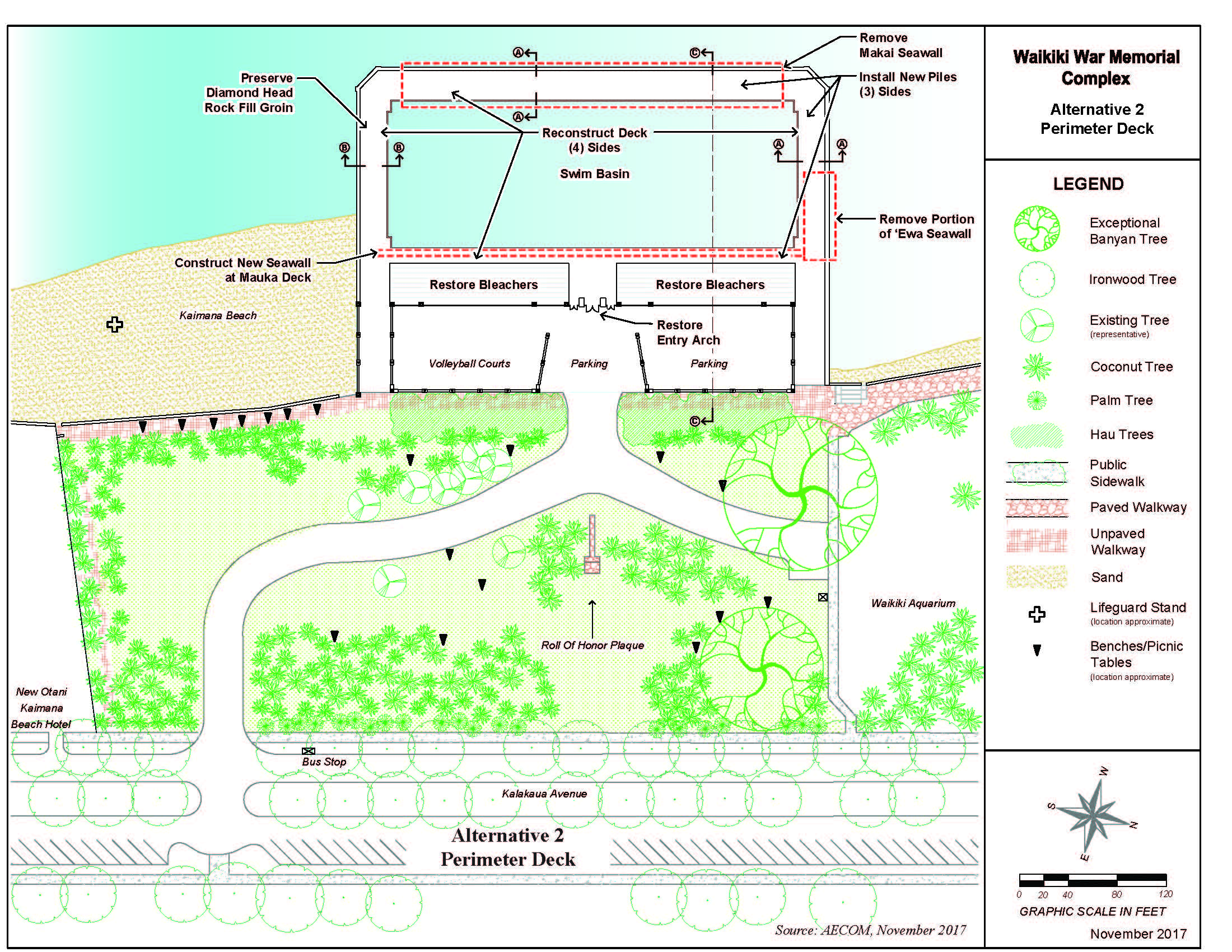
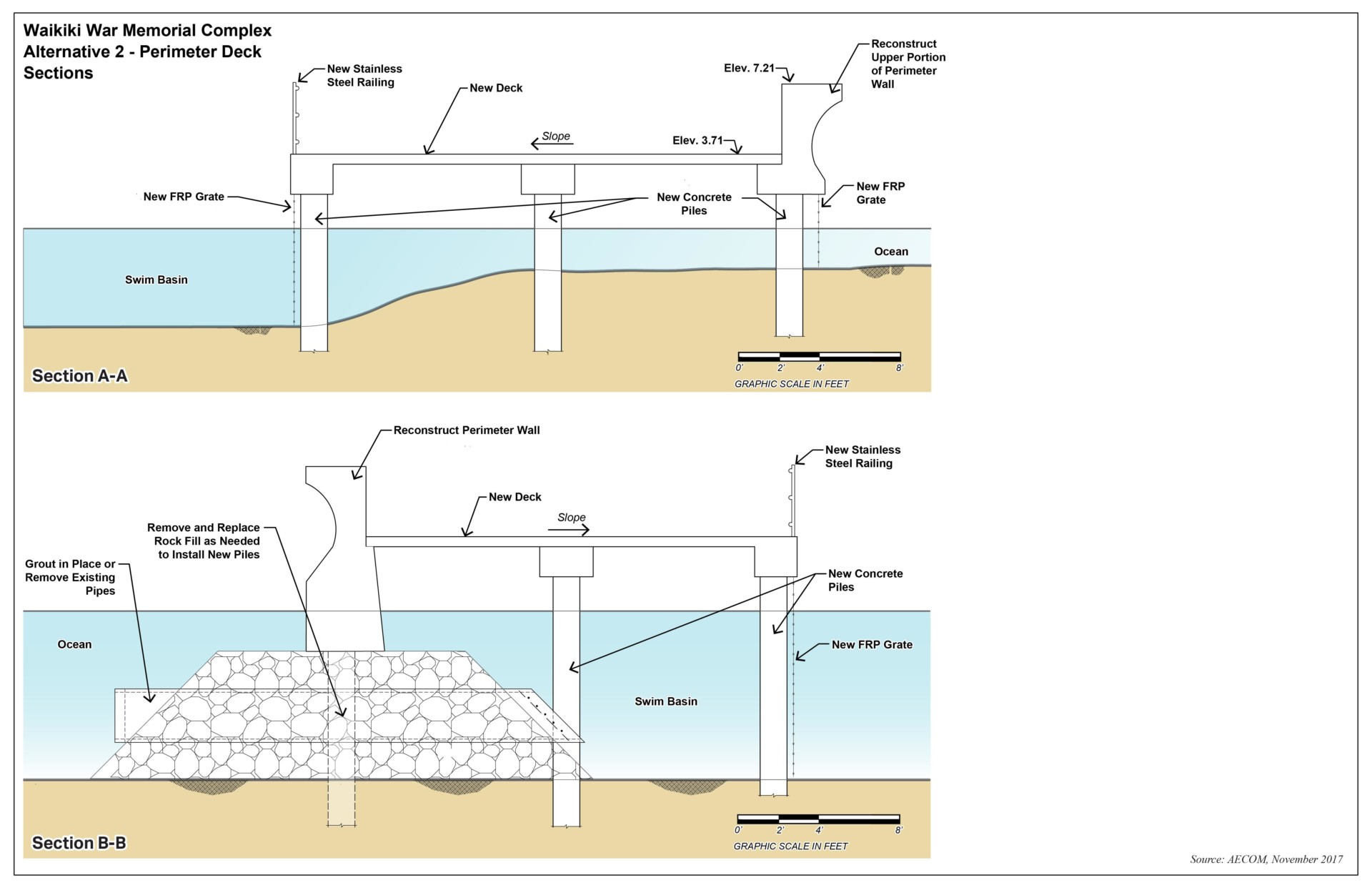
Alternative 2 – Perimeter Deck
• Retains the bleachers, arches, and reconstructs the pool deck in the same location but on new supports.
• Large lengths of the seawall below the deck level would be removed, allowing the free flow of water between the swim basin and ocean.
• Estimated cost $20 million to $30 million.
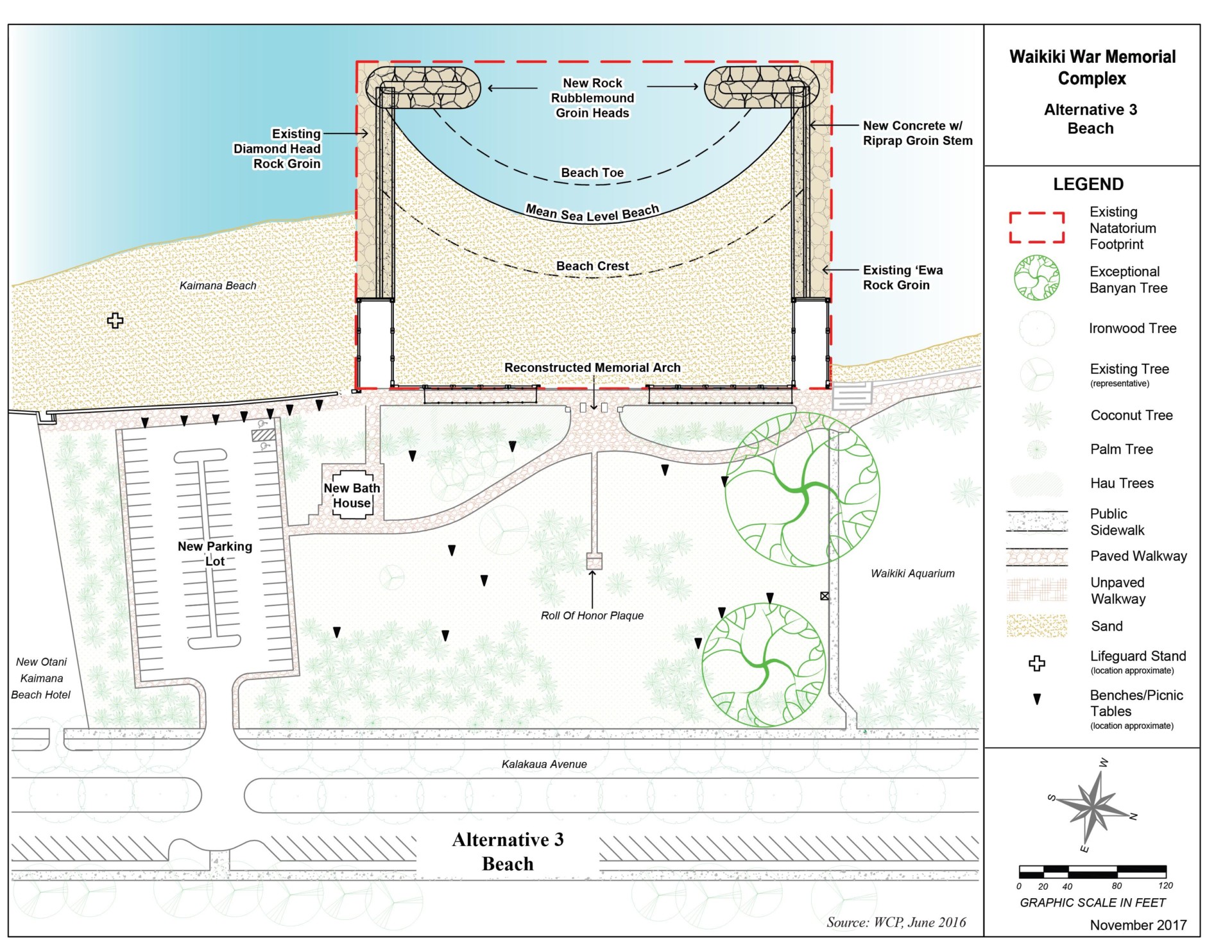
Alternative 3 – Beach
• Creates a war memorial beach between constructed groins with the removal of all structures built seaward of the 1927 shoreline.
• Replica memorial arch would be aligned with the existing Roll of Honor plaque with construction of a new bathhouse, replacement offices for Ocean Safety, removal of the existing roadway and construction of a new parking lot.
• Estimated cost $20 million to $30 million.
Alternative 4 – Debris Removal
• All structures would remain in place with some debris removal and limited access to the public in the event of a collapse.
• Estimated cost $2 million to $4 million.


